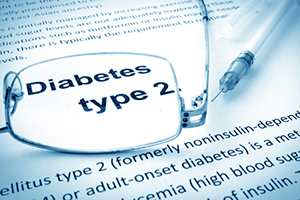 Virtually all prescription drugs carry a risk of side effects, which can range from minor nuisances like an itchy rash, to severely debilitating or fatal consequences.
Virtually all prescription drugs carry a risk of side effects, which can range from minor nuisances like an itchy rash, to severely debilitating or fatal consequences.
Sometimes, these drugs even carry a risk of worsening the very problem they are designed and prescribed to treat, leaving a person in worse shape than they already were before taking the medication.
A recent study published in the Journal of Biological Chemistry, highlights one such case. It looked at a potential for disaster involving a certain class of drug, used to treat type 2 diabetes.
Scientists looking at the newly developing trend of using a glucagon-like peptide, or GLP-1, to treat type 2 diabetes are very frustrated at a glaring risk associated with it.
GLP-1 is a natural hormone the body produces after eating that stimulates the release of insulin. Scientists have been able to isolate and reproduce this hormone. However, GLP-1 in its natural form doesn’t last long when it is injected.
So researchers came up with a synthetic form of it that lasts longer in the body. These are called GLP-1 mimetics because they mimic the effect of the hormone in the body.
Here is where it gets confusing – and potentially very dangerous. The drugs are designed to prevent the release of sugars from the liver into the blood stream. But there is a dangerous series of events possible because of GLP-1’s interaction with a molecule in the body called RAMP2.
RAMP2 is present in most people’s bodies, but in unpredictable amounts. In fact, not much is even known about it other than it is necessary for preventing GLP-1 from binding with glucagon receptors. When that bond happens, it tells the liver to release sugar.
The problem arises for diabetics when RAMP2 is either missing or insufficient. Then it can’t block the glucagon receptors, and the GLP-1 binds with them. This stimulates the liver to release sugar, which is the opposite of what should be happening for a type 2 diabetic.
It’s not as critical with natural GLP-1 because of the extremely brief time it is active in the body. But GLP-1 mimetics last much longer and have an exponentially higher opportunity to find and bind with the glucagon receptors.
Not enough is even known about the interactions between RAMP2, GLP-1, and glucagon to be able to say definitively what the actual risk is. Drug makers would take this as ambiguous at best and say until actual bad events come in, and with enough frequency, no news must be good news.
Critics say this is a dangerous gamble to take with people’s lives, and to not inform them of the risk is incredibly irresponsible.
Either way, it is clear that reversing type 2 diabetes naturally, without medications, is the only guaranteed way to avoid side effects. No meds, no problems.

 Overcoming IBD
Overcoming IBD Multiple Sclerosis
Multiple Sclerosis Banishing Bronchitis
Banishing Bronchitis Gum Disease Gone
Gum Disease Gone Overcoming Onychomycosis
Overcoming Onychomycosis Neuropathy No More
Neuropathy No More The Prostate Protocol
The Prostate Protocol Brain Booster
Brain Booster
 Ironbound
Ironbound
 Solution for Shingles
Solution for Shingles
 The Bone Density Solution
The Bone Density Solution
 The Ultimate Healing Protocol
The Ultimate Healing Protocol
 The Parkinson's Protocol
The Parkinson's Protocol
 The Chronic Kidney Disease Solution
The Chronic Kidney Disease Solution
 Overthrowing Anxiety
Overthrowing Anxiety The Fatty Liver Solution
The Fatty Liver Solution The Hypothyroidism Solution
The Hypothyroidism Solution
 The End of Gout
The End of Gout The Blood Pressure Program
The Blood Pressure Program
 The Oxigized Cholesterol Strategy
The Oxigized Cholesterol Strategy
 Stop Snoring And Sleep Apnea Program
Stop Snoring And Sleep Apnea Program
 The Arthritis Strategy
The Arthritis Strategy The Vertigo & Dizziness Program
The Vertigo & Dizziness Program The 3-Step Diabetes Strategy
The 3-Step Diabetes Strategy Hemorrhoids Healing Protocol
Hemorrhoids Healing Protocol The Erectile Dysfunction Master
The Erectile Dysfunction Master Weight Loss Breeze
Weight Loss Breeze The IBS Program
The IBS Program The Insomnia Program
The Insomnia Program The Migraine and Headache Program
The Migraine and Headache Program The Neck Pain Solution
The Neck Pain Solution The Menopause Solution
The Menopause Solution The Ejaculation Master
The Ejaculation Master The TMJ Solution
The TMJ Solution The Acid Reflux Solution
The Acid Reflux Solution The Fibromyalgia Solution
The Fibromyalgia Solution The Psoriasis Strategy
The Psoriasis Strategy
After I stopped doing aerobics in the gym, I gained weight 29 pounds. On weekends I eat twice. but now in 2015 I managed to lose weight 27 pounds on a diet that site here http://3bestdiets.com/w